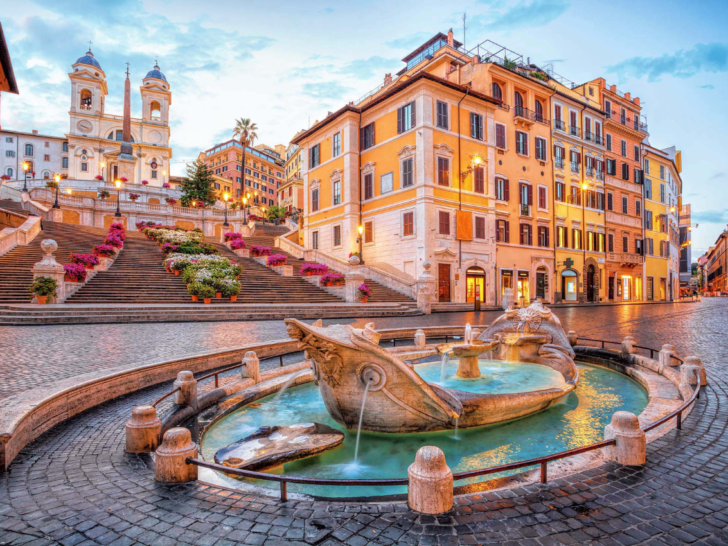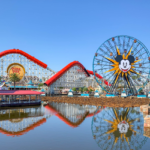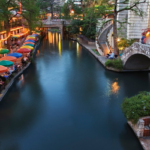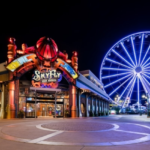Rome, the Eternal City, offers a perfect blend of history, art, and culture, making it a dream destination for travelers. Whether you’re fascinated by ancient ruins, awe-inspiring architecture, or vibrant Italian streets, Rome has something for everyone. This captivating city invites you to explore iconic landmarks, relish authentic cuisines, and lose yourself in its timeless charm. With countless treasures waiting to be discovered, let’s dive into the top 15 experiences in Rome that promise to leave you enchanted and inspired.
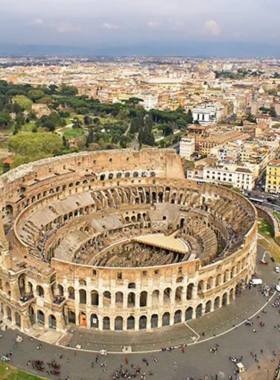
Explore the Colosseum’s Grandeur
Address: Piazza del Colosseo, 1
| Type | Monuments and Memorials, Sightseeing |
| Time to Spend | 1 to 2 hours |
History and Significance: The Colosseum, completed in AD 80, was an architectural marvel of its time. It hosted gladiatorial combat, public spectacles, and dramatic performances, reflecting Roman engineering brilliance and culture. It symbolizes the grandeur of ancient Rome and its entertainment traditions.
What to Expect: Visitors can explore the arena, underground chambers, and upper levels. Guided tours provide historical context about its construction, battles, and cultural significance, offering a fascinating experience.
Visitor Information: The Colosseum is open daily, and tickets also include access to the Roman Forum and Palatine Hill. It is advisable to visit early in the morning or late afternoon to avoid the peak crowds and midday heat.
Step into history at the Colosseum, a remarkable testament to Roman engineering and grandeur. Opened in AD 80, this iconic amphitheater once hosted gladiatorial battles and grand spectacles, seating 50,000 spectators. Wander through its ancient corridors, imagining the vibrant past of roaring crowds and dramatic performances. Don’t miss visiting the nearby Roman Forum and Palatine Hill, included in your ticket. Opt for a guided tour to explore the underground tunnels, uncovering secrets of this historical marvel.
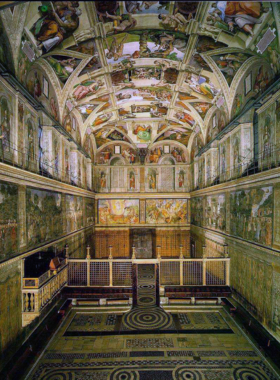
Discover Vatican Museums & Sistine Chapel
Address: Viale Vaticano, 97
| Type | Museums, Churches/Religious Sites, Sightseeing |
| Time to Spend | Half Day to Full Day |
History and Significance: The Vatican Museums, founded by Pope Julius II in the early 16th century, house an extensive collection of art, including masterpieces by renowned artists such as Michelangelo, Raphael, and Leonardo da Vinci. The most famous attraction is the Sistine Chapel, with Michelangelo’s iconic frescoes, including “The Last Judgment.” The Museums reflect the Vatican’s long history as a center of faith, culture, and artistic heritage, with centuries of religious and artistic treasures.
What to Expect: Visitors can expect to be mesmerized by the sheer scale and beauty of the Vatican Museums, with highlights including the Sistine Chapel, Raphael’s Rooms, and ancient Roman sculptures. The Museums span multiple galleries and rooms, offering a deep dive into both religious and artistic history. To enhance your visit, consider booking an early morning or late-night tour to avoid the large crowds and truly immerse yourself in the artworks and atmosphere.
Visitor Information: The Vatican Museums are located in Vatican City, easily accessible by metro or bus. Entry fees apply, with discounted rates for students and children. To make the most of your visit, it’s recommended to book tickets in advance, especially for popular time slots. The Museums are typically open Monday to Saturday, with extended hours on certain days. Remember to dress modestly when visiting, as it is a religious site.
The Vatican Museums house some of the world’s most famous art collections. From Michelangelo’s Sistine Chapel masterpiece to Raphael’s Rooms, the beauty is breathtaking. Beat the crowds by joining an early morning or late-night tour. Explore the intricacies of Vatican City, home to the Pope and a wealth of religious treasures. Whether you’re an art lover or history buff, this spiritual hub provides an unforgettable journey into creativity and faith.
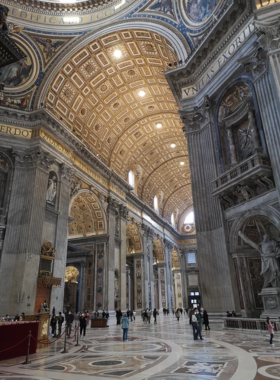
Marvel at St. Peter’s Basilica
Address: Piazza San Pietro
| Type | Free, Churches/Religious Sites, Sightseeing |
| Time to Spend | 1 to 2 hours |
History and Significance:St. Peter’s Basilica, completed in 1626, stands as a Renaissance masterpiece and a spiritual center for Catholics worldwide. Its design incorporates Michelangelo’s dome and Bernini’s artistry.
What to Expect: Inside, admire Michelangelo’s Pietà, the ornate Baldachin, and intricate mosaics. Climbing to the top of the dome offers breathtaking views of St. Peter’s Square and Rome.
Visitor Information: The basilica is free to enter, but there’s a fee for dome access. Ensure to dress modestly as it’s a place of worship, and be prepared for security checks.
St. Peter’s Basilica stands as a pinnacle of architectural and spiritual magnificence. Located in Vatican City, this iconic church offers stunning interiors and panoramic views from its dome. Climb the 551 steps or take an elevator to witness Rome’s breathtaking skyline. Attend a Mass or catch a glimpse of the Pope during a General Audience. Adhere to the dress code to experience this sacred space where faith and artistry converge.
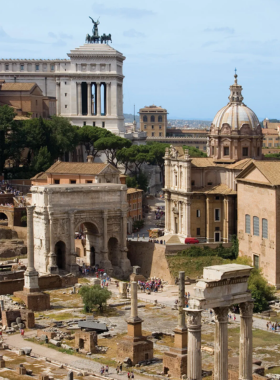
Wander Through the Roman Forum
Address: Via della Salara Vecchia, 5/6
| Type | Monuments and Memorials, Sightseeing |
| Time to Spend | 1 to 2 hours |
History and Significance: The Roman Forum was the center of ancient Roman public life, hosting significant political, religious, and social events. It showcases remnants of temples, basilicas, and monuments that shaped Roman history and governance.
What to Expect: Walk among the ruins of ancient structures like the Temple of Saturn and the Curia Julia. Guided tours provide deep insights into the stories of Roman emperors and citizens.
Visitor Information: Access is included with a Colosseum ticket. Comfortable footwear is recommended as the terrain can be uneven. Plan your visit in the morning for the best light and fewer crowds.
Dive into ancient Rome’s political and social heart at the Roman Forum. A fascinating collection of ruins, this historic site reveals the grandeur of temples, shrines, and government buildings. Landmarks like the Arch of Titus and Temple of Saturn tell stories of a bygone era. Rent an audio guide or join a tour for deeper insights. Stroll leisurely to absorb the essence of this monumental hub of Roman civilization.
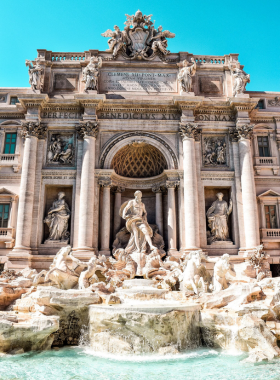
Toss a Coin at the Trevi Fountain
Address: Piazza di Trevi
| Type | Free, Sightseeing |
| Time to Spend | Less than 1 hour |
History and Significance: Built in 1762, the Trevi Fountain is a Baroque masterpiece depicting Neptune and aquatic figures. Its tradition of coin tossing promises a return to Rome, connecting visitors to its lore.
What to Expect: The fountain’s grandeur is enhanced by intricate sculptures and flowing water. Visitors often toss coins, take memorable photographs, or simply enjoy its vibrant atmosphere.
Visitor Information: Open 24/7, the fountain is free to visit. Early mornings or late evenings offer a quieter experience and the best opportunity for photos without heavy crowds.
The Trevi Fountain is an enchanting symbol of Rome’s baroque splendor. Toss a coin into its waters to ensure your return to this magical city. Depicting Oceanus, the god of the sea, and flanked by mythical Tritons, the fountain’s artistry captivates visitors. Even under restoration, the fountain retains its allure, making it a must-visit site that embodies Roman elegance and mythological storytelling.
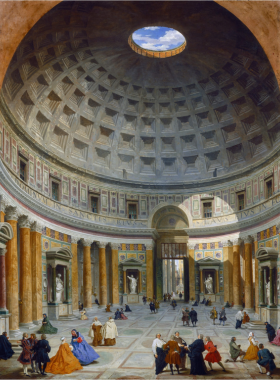
Admire the Timeless Pantheon
Address: Piazza della Rotonda
| Type | Monuments and Memorials, Sightseeing |
| Time to Spend | Less than 1 hour |
History and Significance: The Vatican Museums hold centuries-old art collections, including the Sistine Chapel’s Michelangelo frescoes. These treasures are a testament to the artistic and spiritual legacy of the Catholic Church.
What to Expect: Visitors can marvel at masterpieces like Raphael’s Rooms and ancient sculptures. Guided tours enrich the experience by sharing historical and artistic insights.
Visitor Information: Tickets are mandatory, and booking online helps avoid long queues. Wear comfortable shoes and plan for a full day to explore this vast collection.
The Pantheon, with its stunning dome and perfect proportions, stands as a testament to Roman ingenuity. This ancient temple-turned-church houses the tombs of Raphael and Italy’s kings. Step inside to marvel at its open oculus and architectural brilliance. After your visit, unwind with an espresso at Tazza d’Oro or indulge in gelato at Giolitti, both nearby and quintessentially Roman experiences.
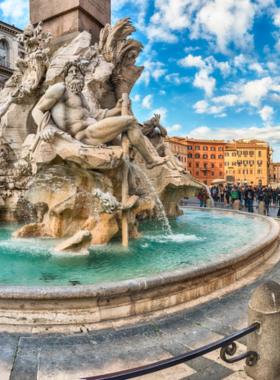
Soak in Piazza Navona’s Charm
Address: Piazza Navona
| Type | Free, Neighborhood/Area, Sightseeing |
| Time to Spend | 1 to 2 hours |
History and Significance: Piazza Navona was built on the site of the ancient Stadium of Domitian. It features Baroque masterpieces like Bernini’s Fountain of the Four Rivers, highlighting Rome’s artistic heritage.
What to Expect: Enjoy street performances, open-air cafes, and fountains. The square is lively during festivals, offering cultural richness and a vibrant atmosphere.
Visitor Information: Accessible all year, Piazza Navona is free to visit. While weekends are busiest, weekday visits provide a more relaxed experience and better opportunities for exploration.
Piazza Navona is a lively square brimming with fountains, cafes, and street performers. Admire the Fountain of the Four Rivers, a Bernini masterpiece, or sip a coffee while soaking in the vibrant atmosphere. Wander through the side streets for hidden culinary gems and unique shops. This historic piazza captures Rome’s energy and artistic spirit, making it a perfect spot for leisure and exploration.
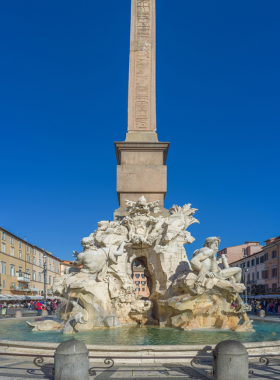
Gaze at Fontana dei Quattro Fiumi
Address: Fontana dei Quattro Fiumi Piazza Navona, 90 00186
| Type | Free, Tours, Sightseeing |
| Time to Spend | Less than 1 hour |
Visitor Information: The Fontana dei Quattro Fiumi is located in Piazza Navona and can be visited free of charge. It is accessible by public transport, with the closest metro station being Barberini. The fountain is best viewed in the early morning or late evening to avoid the busiest crowds. Visitors can explore the surrounding piazza, which is home to numerous cafes, restaurants, and street artists, making it a delightful place to spend time.
What to Expect: Visitors to the Fontana dei Quattro Fiumi can expect to marvel at the grandiose design, with sculptures of river gods surrounded by rich, symbolic details, such as plants and animals. The fountain, situated in the lively Piazza Navona, is a popular spot for art enthusiasts and tourists alike. The surrounding piazza, filled with cafes, artists, and musicians, creates a vibrant atmosphere to enjoy the masterpiece.
History and Significance: The Fontana dei Quattro Fiumi, designed by Gian Lorenzo Bernini in 1651, stands at the heart of Piazza Navona. The fountain represents the four great rivers of the world known in the 17th century—the Ganges, Nile, Danube, and Río de la Plata. Each river is personified by a figure that symbolizes the continents. The intricate sculpture, rich in symbolism, exemplifies Bernini’s exceptional talent and contribution to Baroque art.
Located at Piazza Navona, the Fontana dei Quattro Fiumi embodies Bernini’s artistic genius. The statue personifies four rivers—the Ganges, Nile, Danube, and Río de la Plata—representing continents known in the 1600s. Intricate details, including plants and animals, showcase the fountain’s rich symbolism. Surrounded by the lively ambiance of Piazza Navona, it’s a must-see for art enthusiasts.
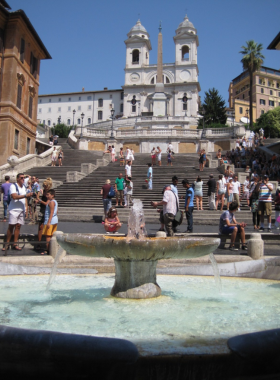
Stroll Along the Spanish Steps
Address: Piazza di Spagna
| Type | Free, Sightseeing |
| Time to Spend | Less than 1 hour |
History and Significance: The Spanish Steps, built between 1723 and 1725, were designed by architects Francesco de Sanctis and Alessandro Specchi to connect the Piazza di Spagna with the Trinità dei Monti Church. Named after the nearby Spanish Embassy, the steps have long been a symbol of Rome’s beauty and grandeur. Over the centuries, they’ve inspired countless artists, writers, and poets, adding to their cultural and historical importance.
What to Expect: Visitors to the Spanish Steps will be greeted by the elegant staircase, with 135 steps adorned with beautiful flowers in spring. The nearby Keats-Shelley House, dedicated to English poets John Keats and Percy Bysshe Shelley, offers a glimpse into literary history. After exploring, take a moment to relax at Babington’s, a traditional English tea room, and soak in the charming atmosphere of the area.
Visitor Information: The Spanish Steps are located in the heart of Rome and are free to visit. They are easily accessible by metro, with the Spagna station being the closest. To avoid large crowds, it’s best to visit early in the morning or later in the evening. The area surrounding the steps features a variety of shops, cafes, and restaurants, making it a perfect spot to relax after sightseeing.
The Spanish Steps, an elegant staircase connecting Piazza di Spagna and Trinità dei Monti Church, offer a romantic escape in Rome. Blooming azaleas in spring enhance their charm, attracting artists and writers for centuries. Visit the nearby Keats-Shelley House for a glimpse into literary history, or enjoy afternoon tea at Babington’s, embracing the area’s English legacy.
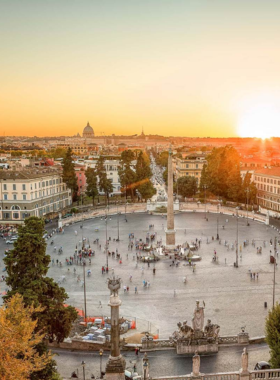
Unwind at Piazza del Popolo
Address: Piazza del Popolo, 00187
| Type | Free, Tours, Sightseeing |
| Time to Spend | 1 to 2 hours |
History and Significance: Piazza del Popolo, meaning “People’s Square,” has been a grand entrance to Rome since ancient times. Originally marking the city’s northern gate, it was redesigned in the 19th century by architect Giuseppe Valadier. The square features the Flaminian Obelisk, a symbol of Rome’s ancient ties to Egypt, and two Baroque twin churches. Historically, it was a venue for public ceremonies and events, reflecting its cultural and architectural prominence.
What to Expect: Visitors can marvel at the twin churches of Santa Maria in Montesanto and Santa Maria dei Miracoli, explore intricate fountains, and admire the towering Flaminian Obelisk. The square often hosts events and performances, adding to its lively atmosphere. For a panoramic view, walk up to Pincio Terrace, which overlooks the piazza. The vibrant energy and mix of history and modernity make it a delightful spot for both relaxation and exploration.
Visitor Information: The Piazza del Popolo is free to visit and open year-round. Located in the heart of Rome, it is easily accessible by metro, with the nearest stop being Flaminio. Comfortable footwear is recommended as the area is best explored on foot. Early mornings and evenings are ideal for avoiding crowds and enjoying the serene beauty of the square. Nearby, you’ll find cafes, restaurants, and shops to enhance your visit.
Piazza del Popolo, a spacious square, is perfect for people-watching and architectural admiration. Explore its twin churches, fountains, and the Flaminian Obelisk. For an authentic experience, skip touristy cafes and opt for Canova, once frequented by filmmaker Federico Fellini. Its vibrant energy and historic significance make it a delightful stop on your Roman adventure.
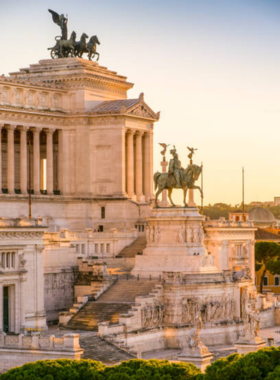
Climb Capitoline Hill
Address: 00186 Rome, Metropolitan City of Rome Capital, Italy
| Type | Neighborhood/Area, Free, Sightseeing |
| Time to Spend | 1 to 3 hours |
History and Significance: Capitoline Hill, one of Rome’s seven hills, has been a symbol of political power since ancient Roman times. It was once the heart of Roman religion and politics, hosting temples dedicated to Jupiter and other gods. The hill is home to the Capitoline Museums, which feature ancient sculptures and Renaissance art, reflecting both the city’s rich history and its artistic evolution. Michelangelo’s architectural design of the piazza is also a key feature.
What to Expect: At Capitoline Hill, visitors can enjoy stunning views of the Roman Forum and the surrounding cityscape. The piazza, designed by Michelangelo, is home to the striking bronze statue of Emperor Marcus Aurelius. Within the Capitoline Museums, you’ll discover a vast collection of Roman sculptures, including the famous statue of the she-wolf suckling Romulus and Remus, as well as Renaissance artworks, making this a perfect spot for history and art lovers.
Visitor Information: Capitoline Hill is located near the Roman Forum, easily reachable on foot from central Rome. The Capitoline Museums are open daily, with tickets available for purchase online or at the entrance. Admission is free on the first Sunday of each month. Be sure to take in the views from the hill and explore the nearby landmarks, including the Roman Forum and Colosseum. Dress comfortably for a leisurely exploration.
Capitoline Hill offers panoramic views and houses Rome’s Capitoline Museums. Designed by Michelangelo, its piazza and bronze statue of Marcus Aurelius are captivating. Explore ancient sculptures and Renaissance art within the museums. This historic hill blends Roman history with artistic brilliance, providing a serene escape from the city’s bustling streets.
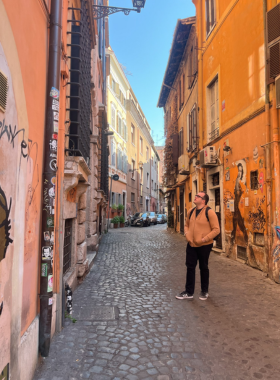
Cross the Tiber to Trastevere
Address: Trastevere
| Type | Free, Neighborhood/Area |
| Time to Spend | 2 hours to Half Day |
History and Significance: Trastevere, with its cobbled streets and medieval buildings, is a bohemian district reflecting Rome’s authentic charm and history. It is a hub for art, cuisine, and culture.
What to Expect: Explore quaint streets, visit the Basilica of Santa Maria, and enjoy traditional Italian food. The lively atmosphere is captivating.
Visitor Information: Accessible any time of year, Trastevere is best explored on foot. Evening visits are vibrant with activity, perfect for mingling with locals and tourists alike.
Trastevere, a charming neighborhood across the Tiber River, offers cobblestone streets and authentic Roman vibes. Discover quaint cafes, vibrant street art, and historic churches like Santa Maria in Trastevere. Known for its lively nightlife and traditional eateries, it’s the perfect spot to immerse yourself in local culture and cuisine.
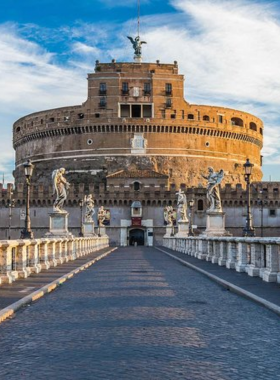
Visit Castel Sant’Angelo
Address: Lungotevere Castello, 50, 00193
| Type | Castles/Palaces, Tours, Sightseeing |
| Time to Spend | 2 hours to Half Day |
History and Significance: Castel Sant’Angelo, initially built as a mausoleum for Emperor Hadrian in the 2nd century, has had many roles over the centuries. It served as a fortress, a papal residence, and even a prison. The castle’s transformation from a tomb to a stronghold reflects its historical importance in protecting the Vatican. Its architecture, combining ancient Roman and medieval styles, is a testament to Rome’s evolving history.
What to Expect: Visitors to Castel Sant’Angelo can explore its fascinating history through the museum’s exhibits, which include Renaissance art, ancient relics, and military artifacts. Don’t miss the panoramic views from the castle’s terrace, offering stunning vistas of Rome, the Vatican, and the Tiber River. The castle’s maze of corridors, rooms, and ramparts invites discovery, making it a perfect destination for history enthusiasts.
Visitor Information: Located near the Vatican, Castel Sant’Angelo is easily accessible on foot from St. Peter’s Basilica. The castle is open daily, and tickets can be purchased online or at the entrance. Audio guides are available to enhance the experience. Plan for a few hours to fully explore the castle’s museum and enjoy the breathtaking views from the top.
Castel Sant’Angelo, originally a mausoleum for Emperor Hadrian, boasts a fascinating history as a fortress and papal residence. Today, it’s a museum offering panoramic city views from its terrace. Wander through its corridors, exploring Renaissance art and ancient relics. Its proximity to the Vatican makes it a convenient and rewarding visit.
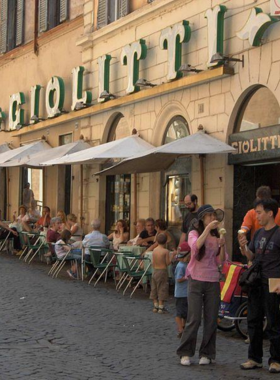
Relish Gelato at Giolitti
Address: Via degli Uffici del Vicario,
| Type | Neighborhood/Area, Sightseeing |
| Time to Spend | 1 to 2 hours |
History and Significance: Founded in 1900, Giolitti is one of Rome’s oldest and most iconic gelaterias. Its historical significance is rooted in its long-standing tradition of serving high-quality, artisan gelato. Located near the Pantheon, it has been a favorite spot for both locals and tourists seeking an authentic Roman gelato experience. The shop’s legacy contributes to Rome’s culinary culture, offering a timeless taste of Italy’s beloved dessert.
What to Expect: At Giolitti, visitors can expect a wide variety of creamy, authentic gelato flavors, from traditional pistachio and chocolate to more adventurous combinations. The gelato is made with fresh, local ingredients, and the shop’s classic atmosphere adds to the charm. It’s the perfect stop to relax, savor a sweet treat, and watch the world go by in one of Rome’s most picturesque areas.
Visitor Information: Giolitti Gelateria is located just a short walk from the Pantheon, making it an ideal pit stop during a day of sightseeing. The gelateria is open daily, with a variety of gelato, sorbets, and other desserts available. Be prepared for a crowd, especially in peak tourist season, but it’s well worth the wait for a true Roman gelato experience.
No trip to Rome is complete without indulging in gelato. Giolitti, a historic gelateria near the Pantheon, serves creamy, authentic flavors. Savor classics like pistachio or experiment with exotic combinations. This sweet treat, enjoyed amidst Rome’s historic backdrop, adds a delightful pause to your sightseeing adventures.
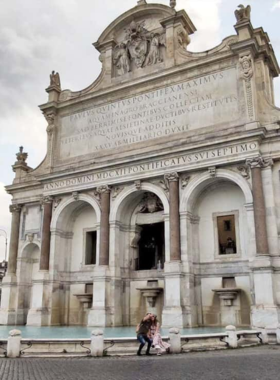
Watch the Sunset at Janiculum Hill
Address: Municipio I, 00165 Roma RM,
| Type | Free, Neighborhood/Area, Sightseeing |
| Time to Spend | 2 hours to Half Day |
History and Significance Janiculum Hill offers a historic connection to Rome’s defense and independence movements. It provides a peaceful retreat from the bustling city.
What to Expect Enjoy panoramic views of the city, especially during sunset. Visit monuments like Garibaldi’s statue and the iconic Fontana dell’Acqua Paola.
Visitor Information Free to visit, the Janiculum Terrace is accessible throughout the year. Early evenings provide the most stunning views and an ideal atmosphere for photography.
Janiculum Hill, a serene retreat, offers breathtaking views of Rome’s skyline at sunset. Stroll through its gardens or visit the Garibaldi Monument for a historical touch. Away from the city’s hustle, this tranquil spot lets you reflect on your Roman journey while soaking in the golden hues of the Eternal City.

